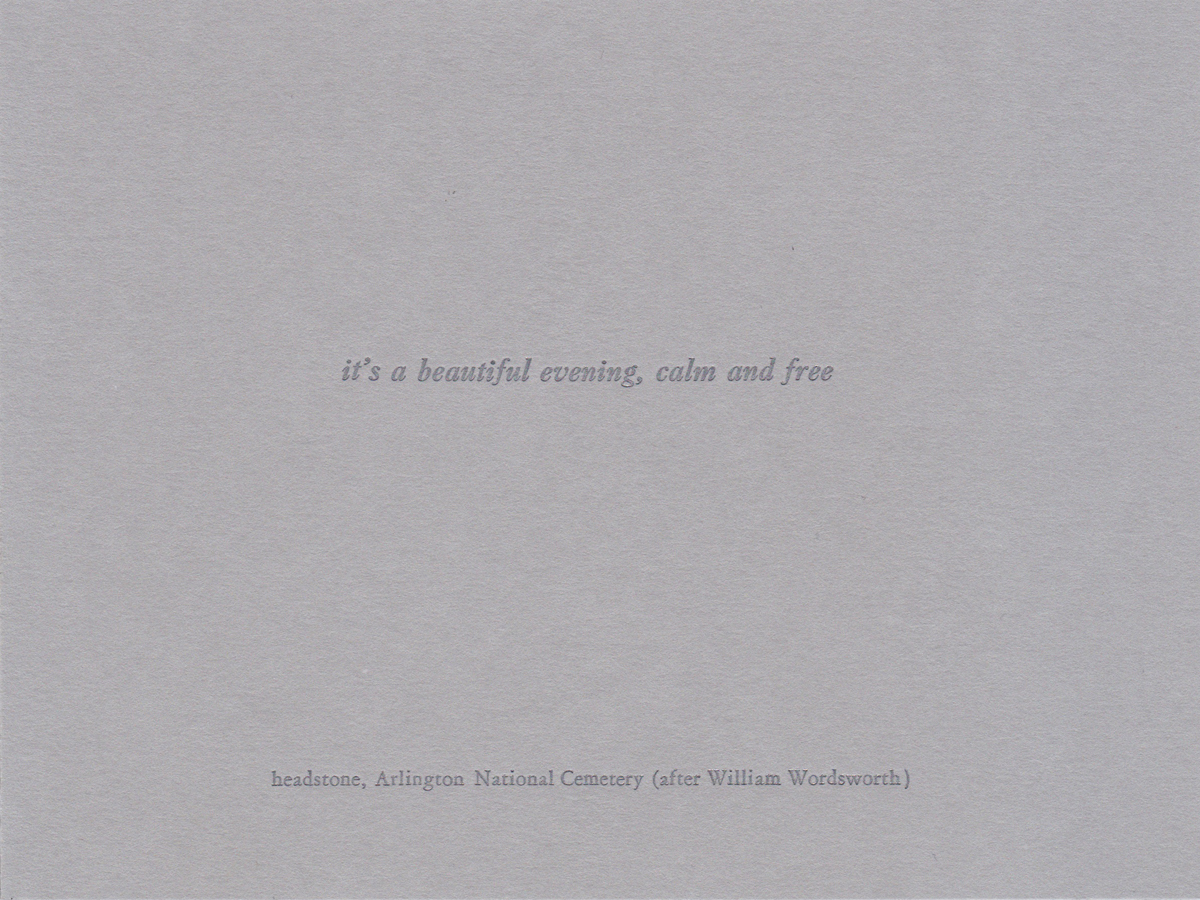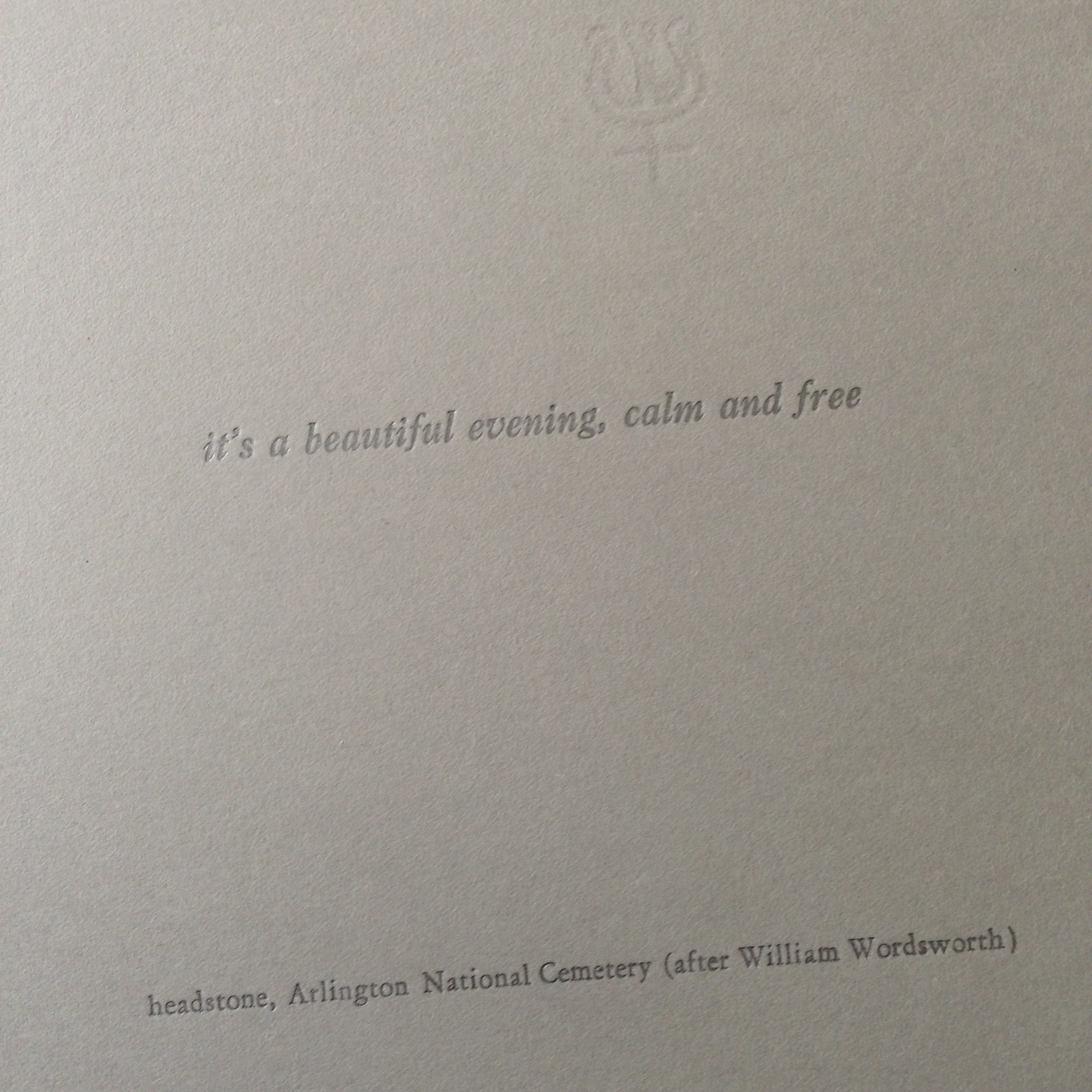Wordsworth at Arlington
Wordsworth at Arlington, 2014. Printed letterpress: grey Hahnemuhle rag embossed with silver ink.
Wordsworth at Arlington, 2014
printed letterpress: grey Hahnemuhle rag embossed with silver ink
6 x 8 inches (HxW)
Edition of 35
William Wordsworth’s sonnet “It is a beauteous evening, calm and free“ was written at Calais in August 1802. Describing an evening walk on the beach with his nine-year old daughter Caroline Vallon, Wordsworth reflects that if his young daughter is seemingly unaffected by the majesty of the scene it is because, being young, she is naturally at one with nature:
It is a beauteous evening, calm and free,
The holy time is quiet as a Nun
Breathless with adoration; the broad sun
Is sinking down in its tranquillity;
The gentleness of heaven broods o'er the Sea:
Listen! the mighty Being is awake,
And doth with his eternal motion make
A sound like thunder--everlastingly.
Dear Child! dear Girl! that walkest with me here,
If thou appear untouched by solemn thought,
Thy nature is not therefore less divine:
Thou liest in Abraham's bosom all the year;
And worship'st at the Temple's inner shrine,
God being with thee when we know it not.
A reference to this sonnet, worded as “It’s a beautiful evening calm and free”, was the sole epitaph on the headstone of a United States soldier who died during the recent U.S. war in Iraq and whose remains are buried at Arlington National Cemetery.

